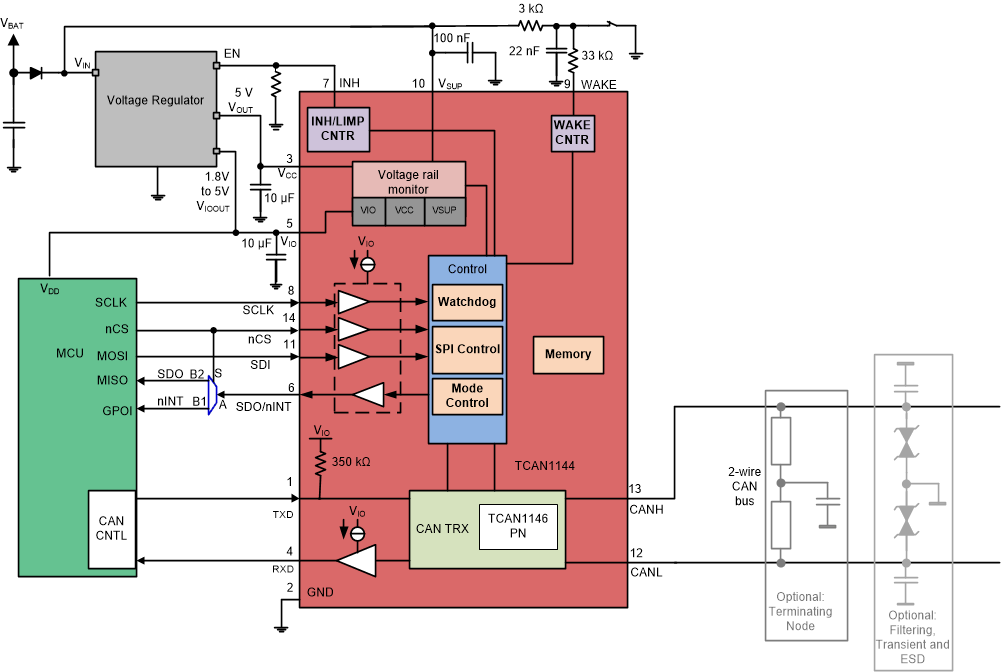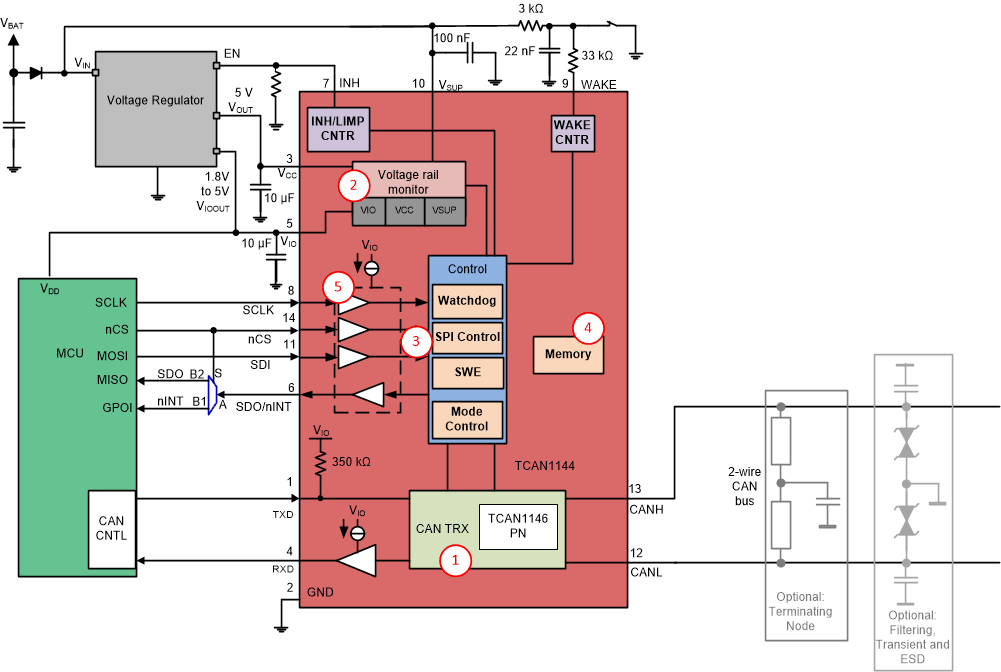SLLA475 December 2020 TCAN1144-Q1 , TCAN1146-Q1
- 1TCAN1144-Q1 and TCAN1146-Q1 Functional Safety Manual
- 2Trademarks
- 3Introduction
- 4TCAN114x-Q1 Hardware Component Functional Safety Capability
- 5Development Process for Management of Systematic Faults
- 6TCAN1144-Q1 and TCAN1146-Q1 Component Overview
- 7Description of Hardware Component Parts
- 8TCAN1144-Q1 and TCAN1146-Q1 Management of Random Faults
6.1 Targeted Applications
The TCAN1144-Q1 and TCAN1146-Q1 components are targeted at general-purpose automotive applications that can support system level functional safety based upon quality managed criteria. This is called Safety Element out of Context (SEooC) development according to ISO 26262-10. In this case, the development is done based on assumptions on the conditions of the semiconductor component usage, and then the assumptions are verified at the system level. This method is also used to meet the related requirements of IEC 61508 at the semiconductor level. This section describes some of the target applications for this component, the component safety concept, and then describes the assumptions about the systems (also know as Assumptions of Use or AoU) that were made in performing the safety analysis.
Example target applications include, but are not limited to, the following:
- General purpose applications containing a processor and external power.
Figure 6-3 shows a generic block diagram for a general purpose system. This diagram is only an example and may not represent a complete system. Figure 6-4 provides potential failure points that have diagnostic or test ability mechanisms.
 Figure 6-3 TCAN1144-Q1 and TCAN1146-Q1 General Purpose Application
Figure 6-3 TCAN1144-Q1 and TCAN1146-Q1 General Purpose Application Figure 6-4 TCAN1144-Q1 and TCAN1146-Q1 Potential Failure Points
Figure 6-4 TCAN1144-Q1 and TCAN1146-Q1 Potential Failure Points| Potential Failure Point from Figure 6-4 | Potential Failure Point Description | Section |
|---|---|---|
| 1 | CAN communication | See Section 8.3.1.1, Section 8.3.1.2, Section 8.3.1.3, Section 8.3.1.4 and Section 8.3.1.5 |
| 2 | Supply voltage rail monitoring | See Section 8.3.2.1, Section 8.3.2.2 and Section 8.3.2.3 |
| 3 | SPI/Processor communication | See Section 8.3.3.1, Section 8.3.3.2, Section 8.3.3.3 and Section 8.3.3.4 |
| 4 | Device internal EEPROM | See Section 8.3.4.1 |
| 5 | Floating pins | See Section 8.3.5.1, Section 8.3.5.2, Section 8.3.5.3 and Section 8.3.5.4 |